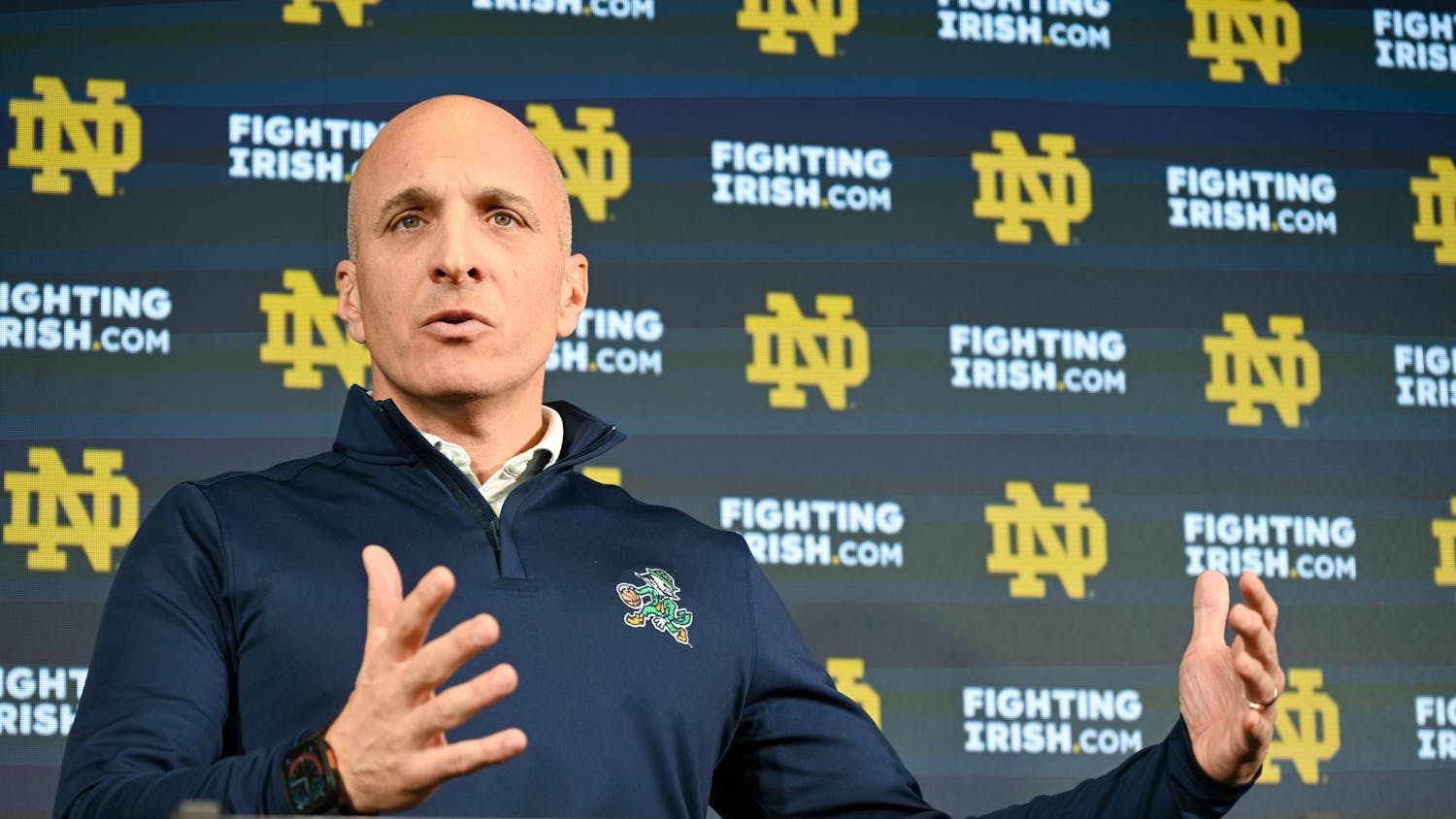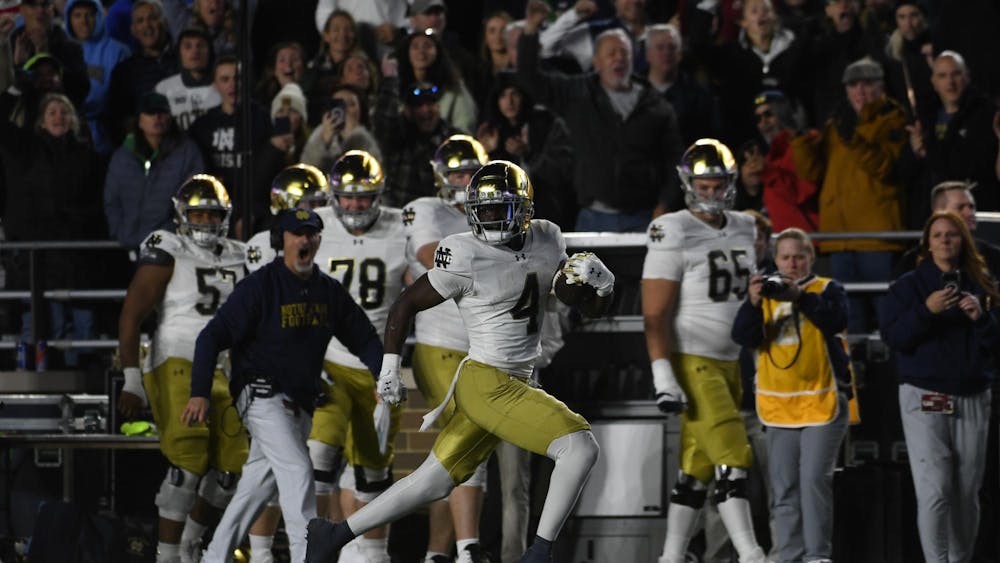The 70’s brought a wave of change for Notre Dame as the landmark Title IX amendment impacted the gender barrier in both education and athletics. It has been 50 years since this historic decision, and the anniversary happens to correspond with Notre Dame’s birth of co-education in 1972. After 130 years as a predominantly male school, the first group of women — composed of 125 freshman and 240 transfers — enrolled in 1972. This number equated to 7 males for every 1 female. Today, females make up almost half of the student population at Notre Dame. The following year 417 more females joined the ranks.
Betsy Fallon ’76 and Jane Lammers ’77 were pioneers for women’s tennis. Desiring participation in an organized team sport, like many of her peers, Fallon tried out for a place on the men’s tennis roster. After this was proved unsuccessful, she gathered women tennis players to challenge Saint Mary’s College that first year, and when Jane arrived, they together captained and formed the first official women’s club team on campus: the Notre Dame Women’s Tennis Club. In 1973 they scheduled their own matches against Midwestern colleges and universities.
Lammers and Fallon recruited both players and their volunteer coach Dr. Carole Moore, who was a university professor. The two women also worked with athletic administrators in charge of club sports, Rich O’Leary and Tom Kelly, among others, to persuade the administration and the athletic department to recognize women’s tennis as a varsity sport.
Due to the combination of efforts from Lammers, Fallon and Moore, tennis was on the fast track to varsity, and Vice President Father Edmund Joyce shared that tennis would now make the jump from club to varsity for Lammers’ senior year. Fallon graduated a few months before varsity status, but her experience still contributed greatly to its success. Following tennis as the first women’s varsity sport, fencing achieved varsity status the same season.
After what was rumored to be almost 200 applications, Kathy Cordes was chosen as head coach of the tennis team, making her Notre Dame’s first ever female varsity coach. Vibrant and full of flair, Cordes hit the ground running.
“Driving a green V-8 with ‘IRISH’ on the plates, she reported in August of 1976 for our fall debut as the first varsity team for women,” Lammers said.
Coach Cordes dove right into the Notre Dame athletic tradition, recruiting a team chaplain and selecting stylish green warmups for the ladies. Cordes beefed up the schedule with tournaments, even more intense practices, media coverage on television and radio and matches at Tulane and Louisiana State University in the spring.
“Since practice ran so much later, we were now granted special permission to arrive at the North Quad Dining Hall to share the Training Table with the Football team,” Lammers stated, “We no longer had to run to slip in the back door to get a cold meal.”
This varsity treatment, described as “quite a thrill” by Lammers, most importantly showed that the team was being taken seriously. Lammers, and the rest of the women, were determined to represent Notre Dame well as they continued to gain recognition and attention.
Often reminded that many eyes would be on her, Lammers took the court as captain for the first varsity season. She was known as a top player and outspoken advocate for women’s tennis. Her leadership helped guide the team to a winning season that fall with 7 wins, 2 losses and 1 tie due to darkness (which Lammers remarks, they were winning that one too).
Lammers went on to become one of the first ever female monogram winners, awarded the title by the legendary Moose Krause alongside teammate Mary Behler, then Shukis. It was a full circle moment for Lammers as she received her letter.
“I was touched when the wire mentioned that my father, Paul Lammers ‘49, had played basketball for Moose Krause at Notre Dame and won a monogram in baseball under Coach Jake Kline,” Lammers stated.
When asked about the impact she has had on women’s athletics, specifically women’s tennis at Notre Dame, Lammers looks upon her work fondly and is proud of what has been created today.
“The women loved participating in sports and together we established a foundation that was solid and allowed the teams to soar,” Lammers said. “All these things start in small ways and that’s the beautiful part about where we are today.”
Lammers and Fallon, among other pioneers of Irish women’s athletics, will be invited back to campus for the University of Nevada, Las Vegas football weekend Oct. 21-23. There will be a special recognition ceremony and the group will be recognized during the Notre Dame football game.









